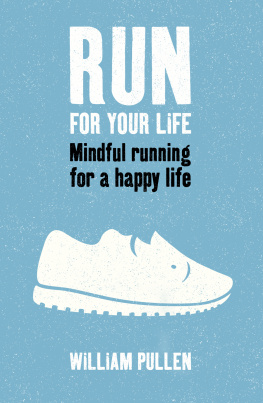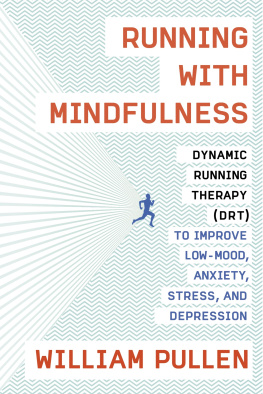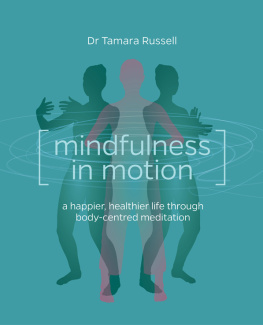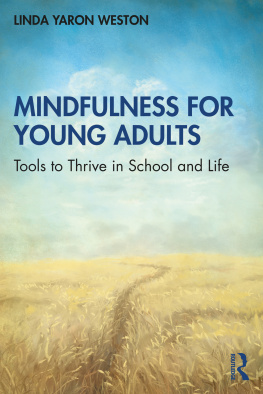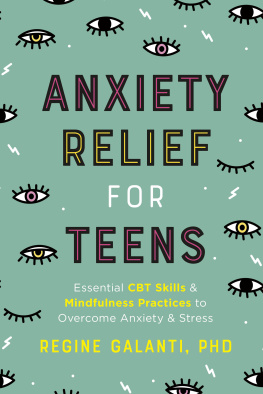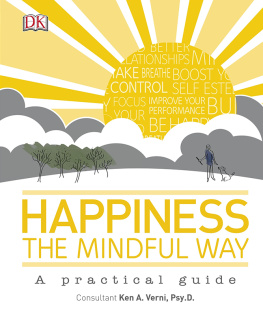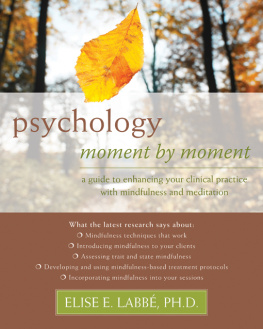PENGUIN LIFE
UK | USA | Canada | Ireland | Australia
India | New Zealand | South Africa
Penguin Life is part of the Penguin Random House group of companies whose addresses can be found at global.penguinrandomhouse.com
First published 2017
Copyright William Pullen, 2017
The moral right of the author has been asserted
Footprint image Szikszaizsu/Shutterstock
Cover design by Mecob
Cover Photograph: Shutterstock.com/PictureStudio; Shutterstock.com/vector illustration
ISBN: 978-0-241-26283-2
Acknowledgements
Id like to thank fellow therapists Joanna Green, Lucy Johnson, Camille De Stempel and Mark Boyden. Id also like to thank my family and all my teachers along the road.
Introduction
What is Dynamic Running Therapy?
Movement is medicine
Have you ever been on a long walk in the fresh air, either alone or with friends, and suddenly had that moment of clarity where all things in life slot into place? Ever gone for a run when your mind is whirring from a busy day in the office and returned home, exhausted, sweaty but with a new take on the events of the past day? At its most fundamental that feeling, that clarity, is the basis of Dynamic Running Therapy, or DRT.
DRT is a powerful and engaging step-by-step therapeutic method for confronting difficult feelings and circumstances in your life through movement. By bringing together exercise, talk therapy and the ancient wisdom of mindfulness, it allows you to return to a healthy, fulfilled life. While mindfulness traditionally focuses on the sensations of the body and the environment to ground you in the present, this practice goes a step further. DRT uses the movement of your body to get you closer to what is going on inside you emotionally, helping you to both understand and process it better. This dynamic method offers a more empowering and proactive route to recovery than traditional therapy, adding a sense of competency and personal achievement to your journey.
DRT can also be adapted to whatever level of fitness you have as long as you are challenging yourself physically some degree some of the time. This means that if a walk is a struggle for you, that counts as DRT. Likewise, if sprinting is your thing then you can set that as your DRT pace. The goal is to find a level of challenge where the blood starts to flow a little faster. There is no need to push yourself too hard or to maintain the same pace throughout the session. Feel free to mix it up, minute by minute, session by session. And for days when the rain or the pain is too much, a session spent sitting inside is just fine.
To me, if life boils down to one thing, its movement.
To live is to keep moving.
JERRY SEINFELD
Anyone who has found themselves opening up to a friend on a long walk or road trip will be familiar with the sense of ease that comes from talking and moving at the same time. The words seem to flow, tumbling from story to story. Transfixed by the momentum, you find yourself travelling down an unfolding path in your mind. You may not see where its leading, and yet you feel no urge to stop. On the contrary, though you might not understand the significance of what youre saying, a sense of the importance of the moment grips you. Secrets, seldom shared before, fall into the conversation with surprising ease. When silence comes it seems to be a natural part of the journey, the moving road ahead somehow holding the togetherness of you in place. Some people call this sensation flow the phenomenon whereby it feels as if you are exactly where you are supposed to be, doing exactly what you are supposed to be doing, at exactly this moment.
DRT doesnt promise that you will experience flow continuously, but because it unites talk therapy with movement it is a practice in which flow often arises. The fact is, movement is healing a medicine not just for the body but also for the mind and soul. We know this in our bones and in our hearts. Movement is instinctive and written deep into our DNA it is why we experience the flow described above and why our hips begin to sway at the sound of a beat.
So, why learn from only the spoken word, or thoughts, when the moving body is so informative? The body screams out in communication and can tell you everything, from what makes you happy and sad to what you do with stress and anger. Your slumped posture reflects how heavily the world weighs down on you this wet and windy Monday morning. The spring in your step today could be a consequence of your promotion yesterday. How you run may indicate how you move in the wider world, such as in your relationships or work life. Are you quick to start but tire rapidly? Are you consistently paced but just cant let go? Or perhaps youre all about the sprint finish, forgetting that the detail of how you start the run is important too?
What DRT Is
- DRT is an open-ended practice, continuing until you decide to stop.
- It is led by you, so is as physically challenging as you choose.
- It is as much about sitting and walking grounding yourself, and being present in various stages of movement as it is about running.
- It is proactive a physical enactment of the feelings in your life and changes that you want.
What DRT Is Not
- It is not a new kind of exercise regime.
- It is not a get-fit-quick routine physical, mental, or emotional.
- It is not all about running.
- It does not require a high level of fitness.
Movement is critical in our lives. Often, in order to grow or to overcome strife we need a sense of undergoing a passage or transition. Movement shifts perspective and, in so doing, provides clarity, firing up hope, drive and possibility. Critical to the power of this practice is a phenomenon referred to as emotion in motion, the sensation of feeling full of and connected to our feelings as we move. We may begin to connect with feelings that are hidden deep down. As we start to move our emotions rise up, enlivened by the energy we exert and the story we are telling ourselves. It is as though somehow the movement becomes an enactment or performance of our inner emotions. This acting out of whats inside can lead to a greater sense of ownership of who we are, as though we are more aligned with ourselves. This powerful process of walking or running with, into or through our feelings can be amazingly insightful and liberating and is the bedrock of DRT.
Sometimes the experience is about familiarization, about getting closer to and knowing more about the specific emotion. Other times its painful, more about allowing suppressed emotion to flow freely at last. And then sometimes it is about nothing more than quietly moving forward, engaged with a fuller sense of who we are and our place in the world.
Whether alone or with a friend, be aware of what you are embarking on. It is important to respect the power this process has and to make it your ally. A momentum often develops which can lead to surprising revelations moments of illumination when suddenly the truth of a particular memory becomes clear or a detail is remembered for the first time. Or it could be you experience the fullness of a feeling in a way you never have before. This can be pleasant or painful. It might be recalling a special moment or compliment whose significance in your life is only now made clear, or perhaps a dreaded confrontation with a loved one or the breakup of an important relationship. Take it slowly, there is no rush. Dont push yourself or feel under pressure to disclose if with a friend.

